Hey y’all,
Like many book nerds, I got sucked into the NYTimes list of 100 Best Books of the 21st Century. I am with Paul Ford that “Why Wasn’t I Consulted?” is the fundamental question of the internet, and so a list like this one is bound to get big clicks.
I turned 18 halfway through 2001, so my whole adult reading life has happened in the 21st century. (What a thought!) I had fun poking through the list, tallying up which books I’d read, and which books I still want to read:


People closer to the publishing world than me have already commented on the pleasures and pitfalls of such an undertaking. John Warner shared his “irritations and interests”, pointing out how much more interesting it is to look at the individual ballots. (James Patterson, for example, didn’t have any of his personal picks make the list, but they all, honestly, looked like books that would be fun to read.) Nick Hornby shared his subjective list. Adam Sternbergh shared his list and how he felt that genre writing was slighted. Dwight Garner wrote about being disappointed that there wasn’t more poetry on the list. (We talked about the art of list-making in our conversation I shared with you back in April.)
One thing that struck me is that only two (great) comics made the list — Alison Bechdel’s Fun Home (2006) and Marjane Satrapi’s Persepolis (2004).
Chris Ware’s Jimmy Corrigan: The Smartest Kid on Earth came out in 2000, and since then the “graphic novel” genre has exploded. Take a look at the kids’ GN section at your local library. You could argue that the graphic novel, which I include under the umbrella of “illustrated books” or “picture books,” is the great book form of this century.
I thought it might be fun for me to list a few more books from this century that have pictures and words that have made a big impact on me in the past 24 years...
If I were to name two books that cracked my head open in the first decade of the century, it would have to be the Chris Ware edited McSweeney’s #13 (2004) and Lynda Barry’s What It Is (2008).
Almost every book that Ware puts out is an art object, but I like him at his loosest and scrappiest, in things like The Acme Novelty Date Book facsimile of his sketchbook and The Acme Novelty Library collection of single page strips. His Building Stories box is incredible just as a publishing phenomenon, as is his Monograph. But McSweeney’s #13, which came wrapped in a Ware-designed dust jacket that held zines by John Porcellino and Ron Rege is a treasured possession of mine — it’s not only one of the most beautiful books, it single-handedly introduced me to dozens of cartoonists I love.
I have written many times about Lynda’s What It Is — my primary feeling when reading it is still: “I didn’t know you could do this in a book.” (I should point out that Ware and Barry have both been published by Drawn & Quarterly, probably my favorite publisher in the world.)
Take a look at the hits in The Pantheon Graphic Library from this century, and you’ve not only got several books from Chris Ware and Satrapi’s Persepolis, but you’ve got classics like Richard McGuire’s Here (2020, soon to be a Robert Zemeckis/Tom Hanks movie), David Mazzuchelli’s Asterios Polyp (2009), Charles Burns’ Black Hole (2005), David B.’s Epileptic (2006), and more recently, books like Kristen Radtke’s Seek You (2021).
One of my favorite forms is the good old-fashioned comic strip collection. There have been no shortage of those in this century. In particular, I love James Kochalka’s American Elf (2004) and Kate Beaton’s Hark! A Vagrant (2011) and Step Aside, Pops (2015) — oh, how I wish both of them didn’t quit putting out strips! (Kochalka occasionally posts American Elf strips on his Patreon.)
Before the rise of social media, we saw the heyday of webcomics in the early aughts. I would love it if Chris Onstad’s Achewood ever got the full deluxe treatment I think it deserves. (I think that Dan Clowes’ The Complete Eightball 1-18 (2015) is second only to The Complete Peanuts in terms of deluxe reissues — both put out by Fantagraphics.)
You can see the influence of the illustrated essay style of Maira Kalman’s And the Pursuit of Happiness (2010) and The Principles of Uncertainty (2007) and the work of my friend Wendy MacNaughton in books like Meanwhile in San Franciso (2014) and her illustrations for Samin Nosrat’s Salt, Fat, Acid, Heat (2017) all over the place these days. (Worth pointing out how a lot of that work also started outline, where the digital scrolling canvas could handle color and long layouts.)
I cannot resist smart mostly-prose books by visual people that weave images in with their text, which is why I picked Tim Kreider We Learn Nothing (2012) and Tamara Shopsin’s Arbitrary Stupid Goal (2017) for my Read Like an Artist Book Club. (Come to think of it, I think it’s time to resurrect a book club in this newsletter. Stay tuned.)
I’m running out of space here and I haven’t even mentioned the people making marvelous picture books for youngsters, like Jon Klassen, Oliver Jeffers, and Blexbolex.
Tell me what I missed and your favorite books — with pictures or just words! — of the century (so far) in the comments:
xoxo,
Austin


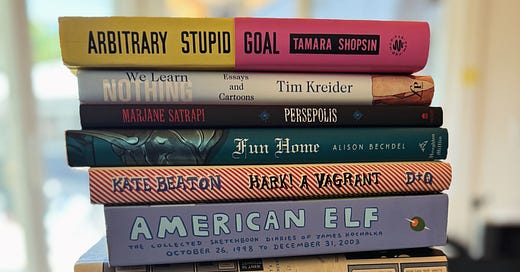



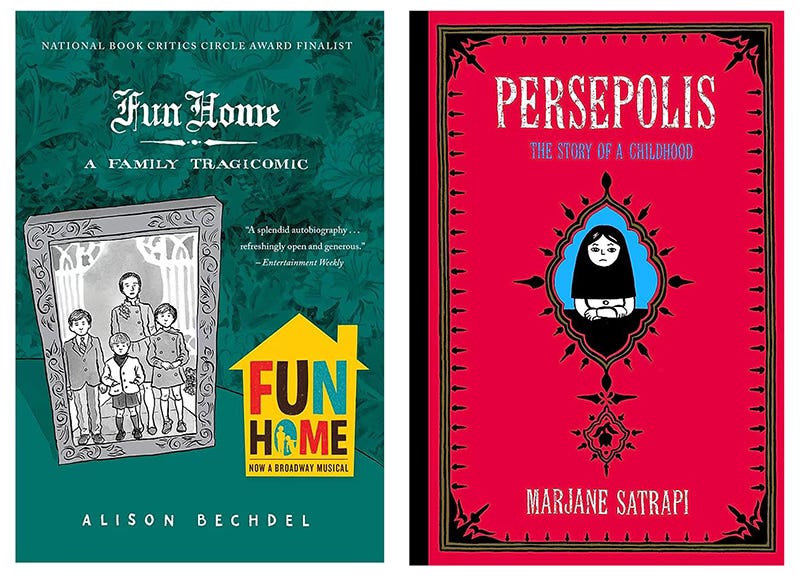
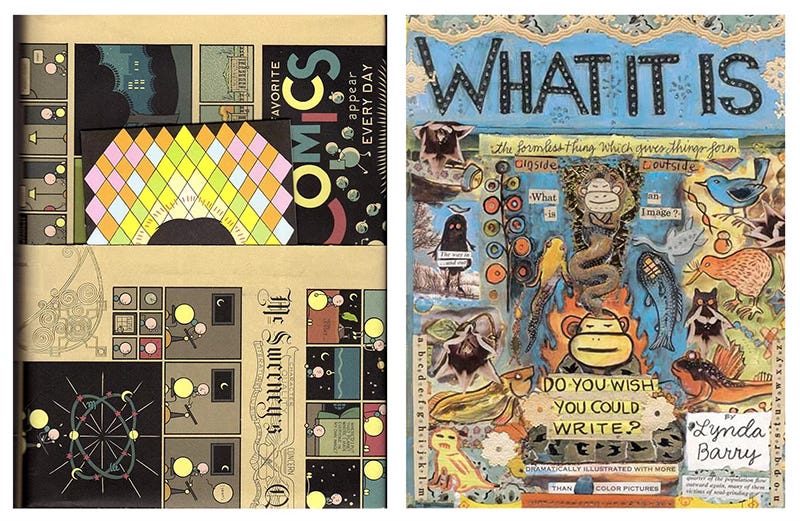
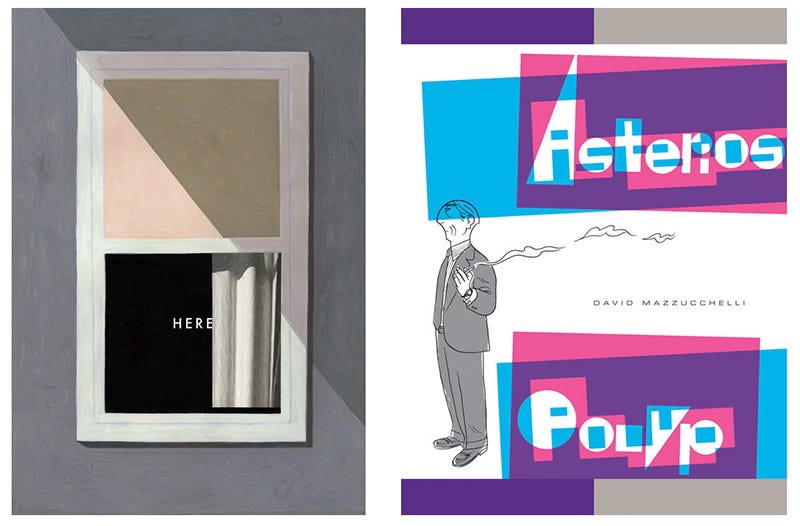
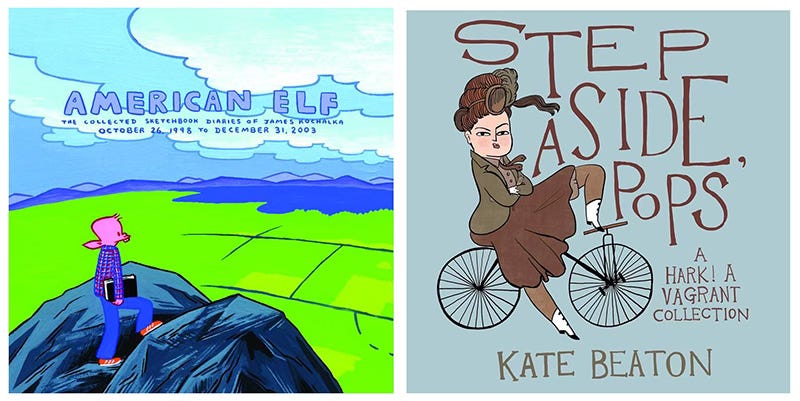
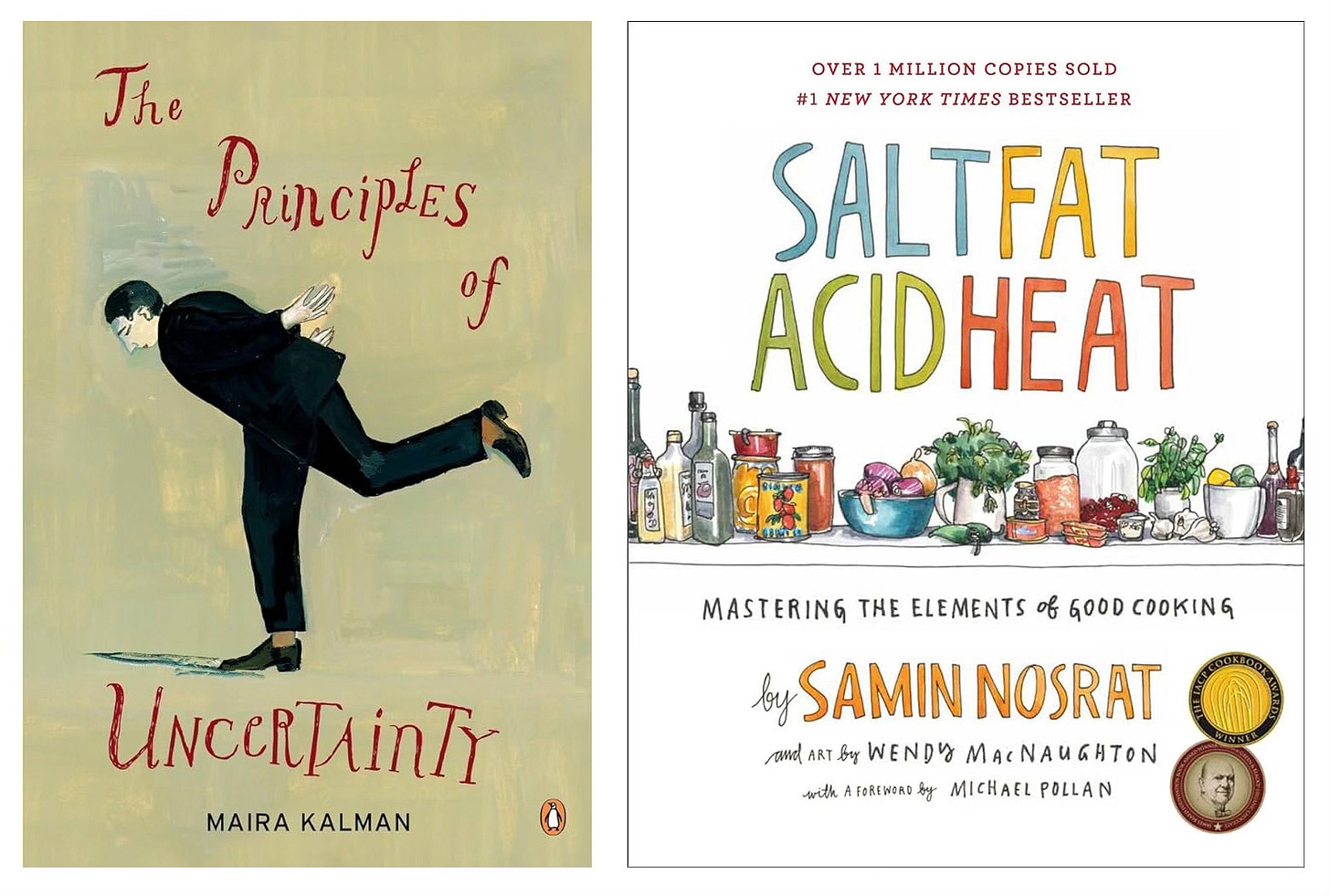

Yes please resurrect the book club! I was a literati member and tried to keep going after you left. But it just wasn't the same.
My favorite thing is Monsters. Incredible.